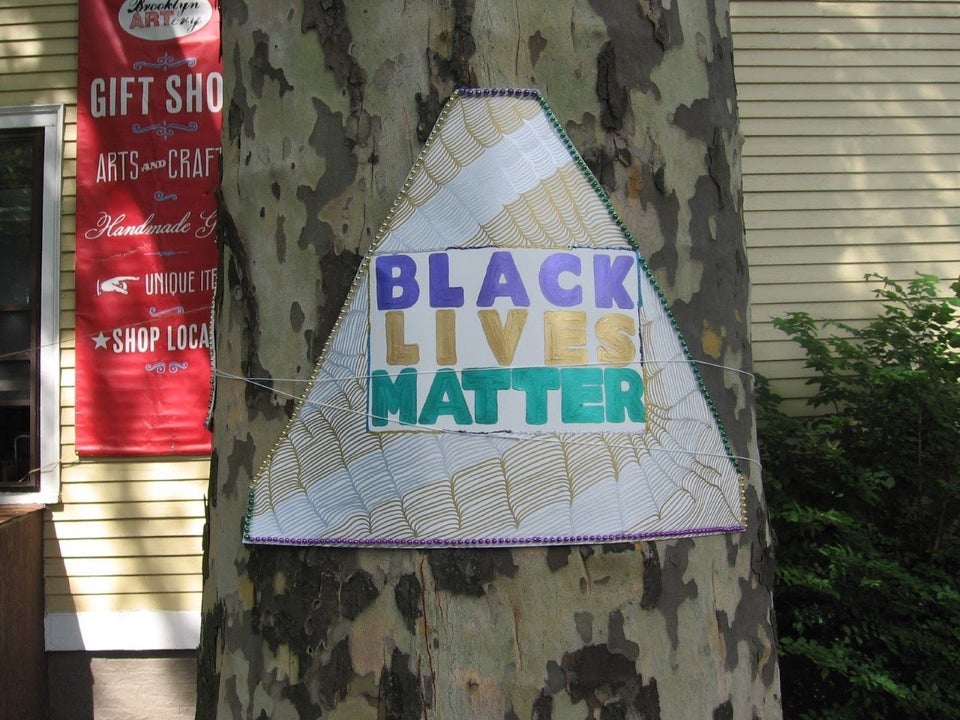
On April 29, an unarmed black teenager named Jordan Edwards was shot to death by Texas police officer Roy Oliver.
The Balch Springs police officer was responding to neighborhood reports citing “rowdy drinking teenagers,” however, no sign of alcohol or guns were found at the scene of his death. Edwards, only 15 years old and in high school, was leaving a house party when the officer shot him. He died at the hospital.
Oliver was fired from the police department after his original report that a car of teenagers aggressively reversed in his direction proved to be false.
In response to the public outcry for the officer’s sentencing, Oliver’s family cited his post-traumatic stress disorder, or PTSD, as a contributing factor to his violence (his lawyer has yet to comment on that or multiple reports of previous misconduct).
That’s problematic for several reasons. First, it stigmatizes people with PTSD by insinuating that mental illness naturally leads to violence. In fact, the opposite is true. Those with mental illness are 16 times more likely to be victims of police brutality and other acts of violence, according to the Treatment Advocacy Center. Although Edwards did not, roughly 25 percent of victims of police shootings showed signs of a severe mental illness, the Washington Post reported.
“Continued cycles of police violence are often a source of trauma and can trigger pre-existing PTSD in the black community”
But in the case of Edwards’ death, mentioning PTSD is exceptionally ironic: Continued cycles of police violence are often a source of trauma and can trigger pre-existing PTSD in the black community, an under-addressed problem according to experts.
In fact, a growing body of evidence suggests that black Americans may experience a specific type of PTSD, called race-based traumatic stress that is induced by repeatedly witnessing traumatic instances in person and via social media.
Racial trauma is expressed in many forms and often includes the same hyper-vigilance, increased aggression, and sensitivity to threats as traditional PTSD.
When 28-year-old Michon Neal, an editor from Simi Valley, California, who identifies as gender queer, witnessed the news of Jordan Edwards’ killing, Neal’s diagnosed PTSD was triggered.
“I am terrified of having to deal with law enforcement in any way,” Neal said. From a young age, Neal began suffering from PTSD symptoms at a young age, attributed to a difficult childhood with episodes of violence that included rape and sexual assault.
“I had lots of counseling in my teens that helped me at least have fewer panic attacks and begin to function, relatively speaking,” Neal said. “But in the last year, with the massive influx of violence and death - and having some of that inflicted directly upon me - I am back where I first started, constantly triggered, hyper-vigilant and paranoid, much more prone to depression and hopelessness.”
“I am back where I first started, constantly triggered, hyper-vigilant and paranoid, much more prone to depression and hopelessness.”
- Michon Neal, an editor from Simi Valley, California,
Neal is not alone. While there are not comprehensive statistics on PTSD in the black community, a Northwestern Medicine study of black residents in Oakland found that 29 percent had the disorder and an additional 7 percent possessed many of the signs.
“There has been a lot of discussion about the rates of PTSD in black Americans over the last few years. This discussion is often marginalized in the larger discussion of PTSD,” said Jennifer Roland, a program developer at Living Grace Home in Las Vegas, Nevada who works with patients that suffer from PTSD.
Though research is still developing, it has become increasingly apparent that “vicarious trauma” can happen as a result of long-term exposure to images of brutality paired with experiences of racism.
For Eve Williams Wilson, a 31-year-old writer living in Buffalo, New York, Edwards’ death, like instances of publicized police violence before it, brought up her own past traumatic experiences with the police. It isn’t the first time she’s experienced panic attack after listening to a news story around police violence.
“I remember driving to pick up my son from school and a police car being in my rearview [mirror],” Wilson said referring to an episode in 2015, shortly after the police shooting of 12-year-old Tamir Rice. “Over the next few months, I realized I was growing more and more nervous around the police, I would feel a loud throbbing filling my head and my nerves would be ravaged.”
The news cycle doesn’t help, she said, with details and even footage shared across social media. The images are nearly inescapable.
Black Americans were 20 percent more likely to suffer from serious mental health issues than the rest of the population, according to the Health and Human Services Office of Minority Health. However, a 2015 report by the Substance Abuse and Mental Health Services Administration revealed only 8.6 percent of black Americans were likely to use mental health services.
Factors that contribute to this are socioeconomic struggles, distrust for health care systems, and lack of black mental health professionals, according to the National Alliance on Mental Illness.
What’s more, few mental health professionals have the levels of cultural sensitivity necessary to assist black Americans with these issues and need to be trained to understand the historical and social context of this trauma, Roland explained.
Moreover, high levels of stigma attached to mental illnesses in the black community can lead many to delay seeking care.
“As long as it’s stigmatized, it will remain in the shadows. People will not want help out of fear from being ostracized by their families,” Roland said.
The prolonged emotional effects of experiencing and even witnessing racist treatment can lead to increased stress and hypertension, which some evidence suggests contributes to racial disparities in health outcomes and even life expectancy.
The loss of Jordan Edwards is a tragedy. And in mourning him, the community must also honor the pain and trauma they endure through open discussion and getting treatment.
